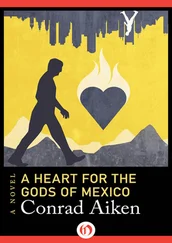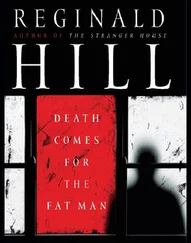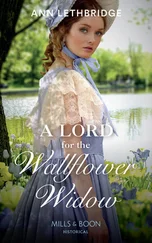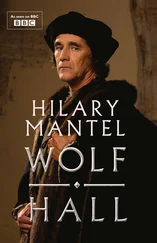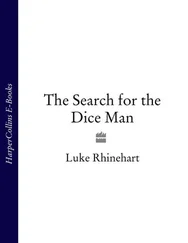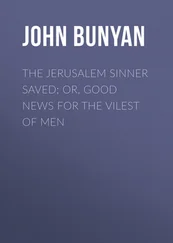The Deaf Man had no intention of intercepting the truck on its way from the main branch bank. Nor did he wish to hit any one of the individual tellers’ cages. No, he wanted to get that money while it was still neatly stacked in the vault. And whereas his own plan was far less dangerous than sticking up an armored truck, he nonetheless felt it to be more audacious. In fact, he considered it innovative to the point of genius, and was certain it would go off without a hitch. Ah yes, he thought, the bank will be robbed, the bank will be robbed, and his step quickened, and he breathed deeply of the heady spring air.
The tennis sneaker found in the abandoned building was in shabby condition, a size-twelve gunboat that had seen better days when it was worn on someone’s left foot. The sole was worn almost through in one spot, and the canvas top had an enormous hole near the area of the big toe. Even the laces were weary, having been knotted together after breaking in two spots. The brand name was well-known, which excluded the possibility of the sneaker having been purchased (as part of a pair, naturally) in any exotic boutique. The only thing of possible interest about this left-footed sneaker, in fact, was a brown stain on the tip of it, near the small toe. This was identified by the Police Laboratory as microcrystalline wax, a synthetic the color and consistency of beeswax, but much less expensive. A thin metallic dust adhered to the wax; it was identified as bronze. Carella was not particularly overjoyed by what the lab delivered. Nor was he thrilled by the report from the Identification Section, which had been unable to find any fingerprints, palm prints, or footprints that matched the dead man’s. Armed with a somewhat unflattering photograph (it had been taken while the man lay stone-cold dead on a slab at the morgue), Carella went back to the Harrison Street neighborhood that afternoon and tried to find someone who had known him.
The medical examiner had estimated the man’s age as somewhere between twenty and twenty-five. In terms of police investigation, this was awkward. He could have been running with a younger crowd of teenagers, or an older crowd of young adults, depending on his emotional maturity. Carella decided to try a sampling of each, and his first stop was a teenage coffee house called Space, which had over the years run the gamut from kosher delicatessen to Puerto Rican bodega to store-front church to its present status. In contradiction to its name, Space was a ten-by-twelve room with a huge silver espresso machine on a counter at its far end. Like a futuristic idol, the machine intimidated the room and seemed to dwarf its patrons. All of the patrons were young. The girls were wearing blue jeans and long hair. The boys were bearded. In terms of police investigation, this was awkward. It meant they could be (a) hippies, (b) college students, (c) anarchists, (d) prophets, (e) all of the foregoing. To many police officers, of course, long hair or a beard (or both) automatically meant that any person daring to look like that was guilty of (a) possession of marijuana, (b) intent to sell heroin, (c) violation of the Sullivan Act, (d) fornication with livestock, (e) corrupting the morals of a minor, (f) conspiracy, (g) treason, (h) all of the foregoing. Carella wished he had a nickel for every clean-shaven, crew-cutted kid he had arrested for murdering his own brother. On the other hand, he was a police officer and he knew that the moment he showed his badge in this place, these long-haired youngsters would automatically assume he was guilty of (a) fascism, (b) brutality, (c) drinking beer and belching, (d) fornication with livestock, (e) harassment, (f) all of the foregoing. Some days, it was very difficult to earn a living.
The cop smell seeped into the room almost before the door closed behind him. The kids looked at him, and he looked back at them, and he knew that if he asked them what date it was, they would answer in chorus, “The thirty-fifth of December.” He chose the table closest to the door, pulling out a chair and sitting between a boy with long blond hair and a dark boy with a straggly beard. The girl opposite him had long brown hair, frightened brown eyes, and the face of an angel.
“Yes?” the blond boy asked.
“I’m a police officer,” Carella said, and showed his shield. The boys glanced at it without interest. The girl brushed a strand of hair from her cheek and turned her head away. “I’m trying to identify a man who was murdered in this area.”
“When?” the boy with the beard asked.
“Sunday night. April eighteenth.”
“Where?” the blond boy asked.
“In an abandoned tenement on Harrison.”
“What’d you say your name was?” the blond boy asked.
“Detective Steve Carella.”
The girl moved her chair back, and rose suddenly, as though anxious to get away from the table. Carella put his hand on her arm and said, “What’s your name, miss?”
“Mary Margaret,” she said. She did not sit again. She moved her arm, freeing it from Carella’s hand, and then turned to go.
“No last name?” he said.
“Ryan,” she said. “See you guys,” she said to the boys, and this time moved several paces from the table before she was stopped again by Carella’s voice.
“Miss Ryan, would you look at this picture, please?” he said, and removed the photo from his notebook. The girl came back to the table, looked at the picture, and said nothing.
“Does he look familiar?” Carella asked.
“No,” she said. “See you,” she said again, and this time she walked swiftly from the table and out into the street.
Carella watched her going, and then handed the photograph to the blond boy. “How about you?”
“Nope.”
“What’s your name?”
“Bob.”
“Bob what?”
“Carmody.”
“And yours?” he asked the boy with the beard.
“Hank Scaffale.”
“You both live in the neighborhood?”
“On Porter Street.”
“Have you been living here long?”
“Awhile.”
“Are you familiar with most of the people in the neighborhood?”
“The freaks, yeah,” Hank said. “I don’t have much to do with others.”
“Have you ever seen this man around?”
“Not if he really looked like that,” Hank said, studying the photo.
“What do you mean?”
“He’s dead in that picture, isn’t he?”
“Yes.”
“Yeah, well, that makes a difference,” Hank said. “The juices are gone,” he said, and shook his head. “All the juices are gone.” He studied the photograph again, and again shook his head. “I don’t know who he is,” he said, “poor bastard.”
The responses from the other young people in the room were similar. Carella took the photograph around to the five other tables, explained what he was looking for, and waited while the dead man’s frozen image was passed from hand to hand. None of the kids were overly friendly (you can get hit on the head by cops only so often before you decide there may not be a basis there for mutual confidence and trust), but neither were they impolite. They all looked solemnly at the picture, and they all reported that they had not known the dead man. Carella thanked them for their time and went out into the street again.
By five o’clock that afternoon he had hit in succession two head shops, a macrobiotic food store, a record store, a store selling sandals, and four other places catering to the neighborhood’s young people — or at least those young people who wore their hair long. He could not bring himself to call them “freaks” despite their apparent preference for the word; to his way of thinking, that was the same as putting an identifying tag on a dead man’s toe before you knew who he was. Labels annoyed him unless they were affixed to case report folders or bottles in a medicine cabinet. “Freaks” was a particularly distressing label, demeaning and misleading, originally applied from without, later adopted from within in self-defense, and finally accepted with pride as a form of self-identification. But how in hell did this in any way lessen its derogatory intent? It was the same as cops proudly calling themselves “pigs” in the hope that the epithet would lose its vilifying power once it was exorcised by voluntary application. Bullshit. Carella was not a pig, and the kids he’d spoken to this afternoon were not freaks.
Читать дальше

